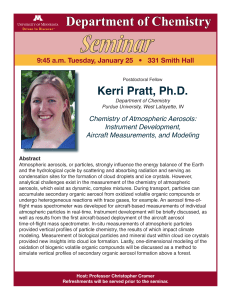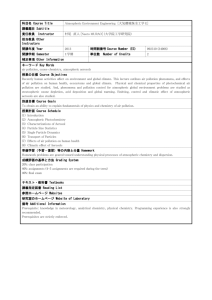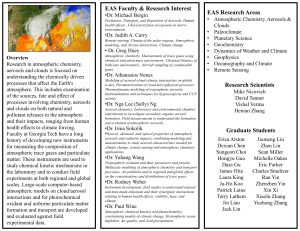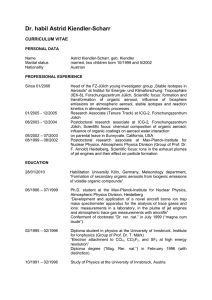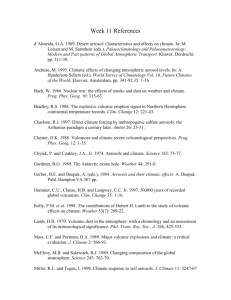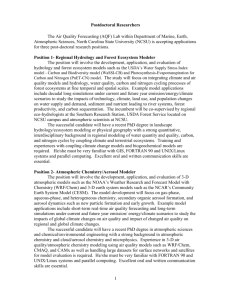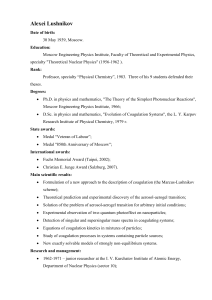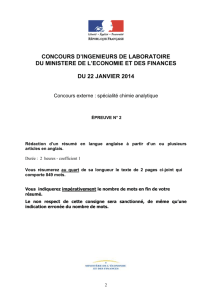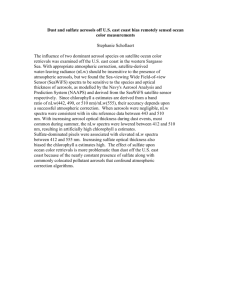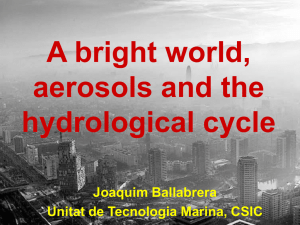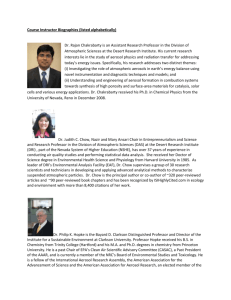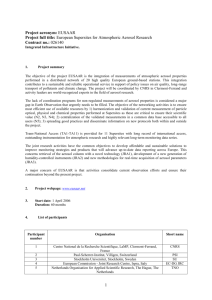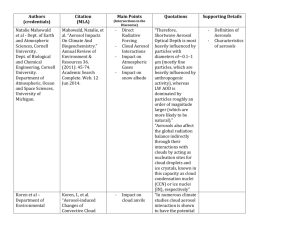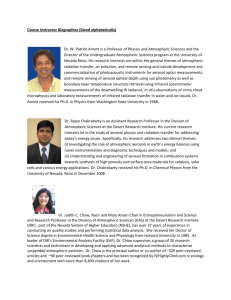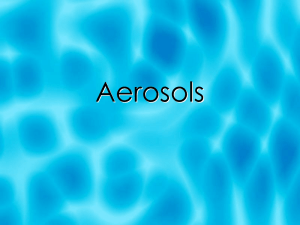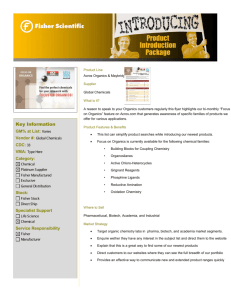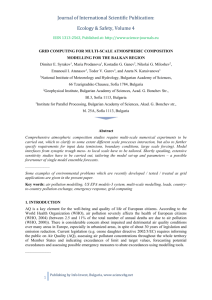Topic Area 1 – `Tropospheric Aerosols and Clouds`
advertisement
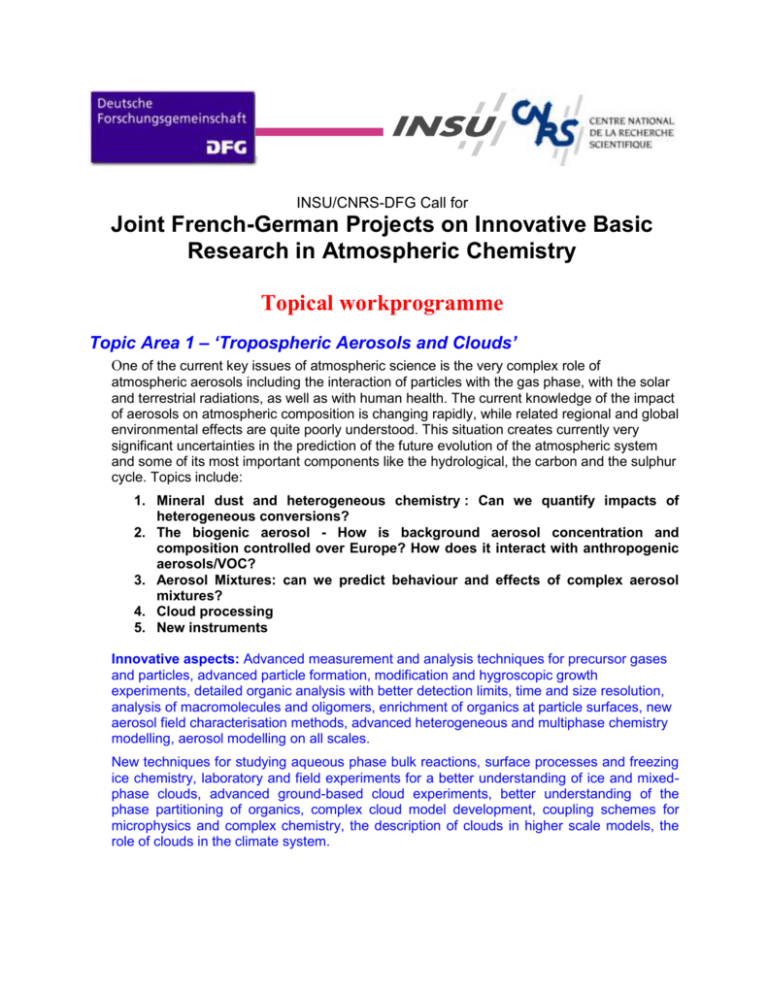
INSU/CNRS-DFG Call for Joint French-German Projects on Innovative Basic Research in Atmospheric Chemistry Topical workprogramme Topic Area 1 – ‘Tropospheric Aerosols and Clouds’ One of the current key issues of atmospheric science is the very complex role of atmospheric aerosols including the interaction of particles with the gas phase, with the solar and terrestrial radiations, as well as with human health. The current knowledge of the impact of aerosols on atmospheric composition is changing rapidly, while related regional and global environmental effects are quite poorly understood. This situation creates currently very significant uncertainties in the prediction of the future evolution of the atmospheric system and some of its most important components like the hydrological, the carbon and the sulphur cycle. Topics include: 1. Mineral dust and heterogeneous chemistry : Can we quantify impacts of heterogeneous conversions? 2. The biogenic aerosol - How is background aerosol concentration and composition controlled over Europe? How does it interact with anthropogenic aerosols/VOC? 3. Aerosol Mixtures: can we predict behaviour and effects of complex aerosol mixtures? 4. Cloud processing 5. New instruments Innovative aspects: Advanced measurement and analysis techniques for precursor gases and particles, advanced particle formation, modification and hygroscopic growth experiments, detailed organic analysis with better detection limits, time and size resolution, analysis of macromolecules and oligomers, enrichment of organics at particle surfaces, new aerosol field characterisation methods, advanced heterogeneous and multiphase chemistry modelling, aerosol modelling on all scales. New techniques for studying aqueous phase bulk reactions, surface processes and freezing ice chemistry, laboratory and field experiments for a better understanding of ice and mixedphase clouds, advanced ground-based cloud experiments, better understanding of the phase partitioning of organics, complex cloud model development, coupling schemes for microphysics and complex chemistry, the description of clouds in higher scale models, the role of clouds in the climate system. Topic Area 2 – ‘Novel Aspects of Urban Pollution and Oxidation Capacity Research’ A better understanding of urban pollution is required because of adverse health effects and the associated need of fostering the further development of limiting values for air pollutants, including PM, in Europe on a scientifically sound basis. Moreover, large urban areas modify the local climate, the precipitation pattern and have been identified as sources of processed air entering into long range transport. Topics include: 1. 2. 3. 4. Radical and oxidant budgets in polluted environments The role of organics in the gas and particle phase The role of surface chemistry Fast and advanced measurement techniques and monitoring strategies for atmospheric chemistry key species Innovative aspects: Advanced methods for characterizing radical budgets, oxidant budgets and oxidation capacity, development of advanced analytical methods for the characterisation of organics in all phases, advanced PM characterisation, integrated modelling of urban air pollution, spatially highly resolved models, advanced PM modelling. Topic Area 3 – ‘Long range transport and processing’ In this area, trans-boundary pollution from natural and anthropogenic sources and its processing should be investigated. Model development and remote sensing techniques will be the main tools of research here. The following subtopics are of interest: 1. Sources of pollutants, import and export of pollution in Europe 2. Tools for detection – remote sensing, satellites, model sensitivity 3. Chemical processing during long-range transport – anthropogenic vs. natural aerosols 4. UT-LS studies in general and with emphasis on import of gas phase and particulate organics from the lower troposphere and their processing within the UT-LS region Innovative aspects: Pollution source apportionment experimentally and by models, development of long-range transport detection tools, development of adequate models and modelling tools, influence of less reactive oxygenated organics on UT/LS HOx, UT/LS photochemistry, the role of PM in the UT/LS.


